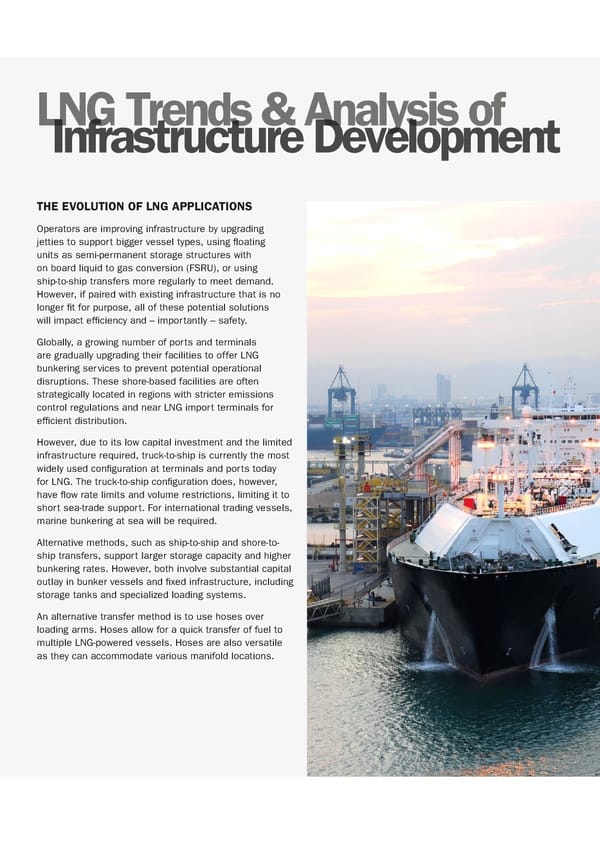LNG Trends & Analysis of Infrastructure Development THE EVOLUTION OF LNG APPLICATIONS Operators are improving infrastructure by upgrading jetties to support bigger vessel types, using floating units as semi-permanent storage structures with on board liquid to gas conversion (FSRU), or using ship-to-ship transfers more regularly to meet demand. However, if paired with existing infrastructure that is no longer fit for purpose, all of these potential solutions will impact efficiency and – importantly – safety. Globally, a growing number of ports and terminals are gradually upgrading their facilities to offer LNG bunkering services to prevent potential operational disruptions. These shore-based facilities are often strategically located in regions with stricter emissions control regulations and near LNG import terminals for efficient distribution. However, due to its low capital investment and the limited infrastructure required, truck-to-ship is currently the most widely used configuration at terminals and ports today for LNG. The truck-to-ship configuration does, however, have flow rate limits and volume restrictions, limiting it to short sea-trade support. For international trading vessels, marine bunkering at sea will be required. Alternative methods, such as ship-to-ship and shore-to- ship transfers, support larger storage capacity and higher bunkering rates. However, both involve substantial capital outlay in bunker vessels and fixed infrastructure, including storage tanks and specialized loading systems. An alternative transfer method is to use hoses over loading arms. Hoses allow for a quick transfer of fuel to multiple LNG-powered vessels. Hoses are also versatile as they can accommodate various manifold locations.
 TM&I LNG Flexibility Factor Report Page 3 Page 5
TM&I LNG Flexibility Factor Report Page 3 Page 5
